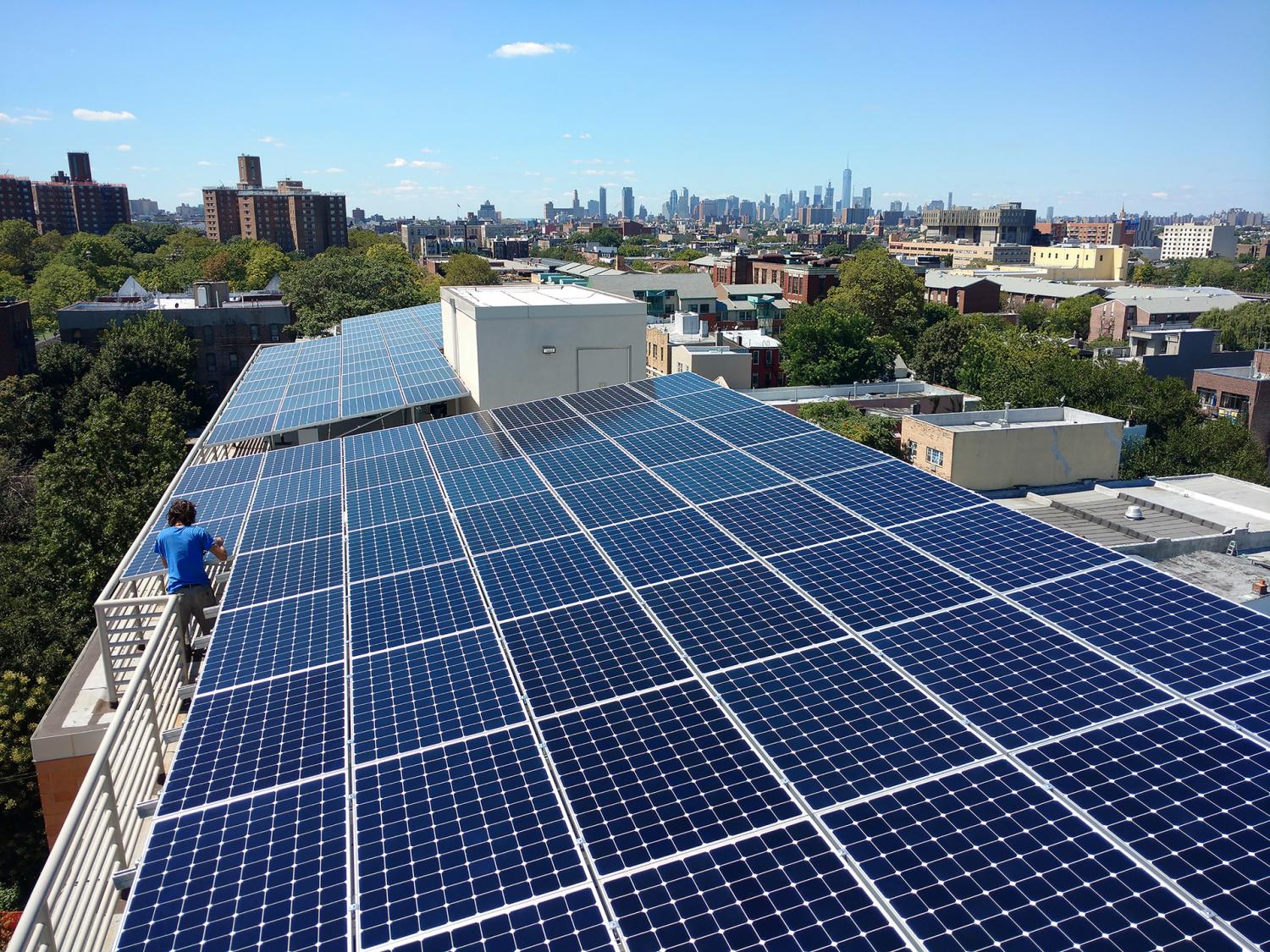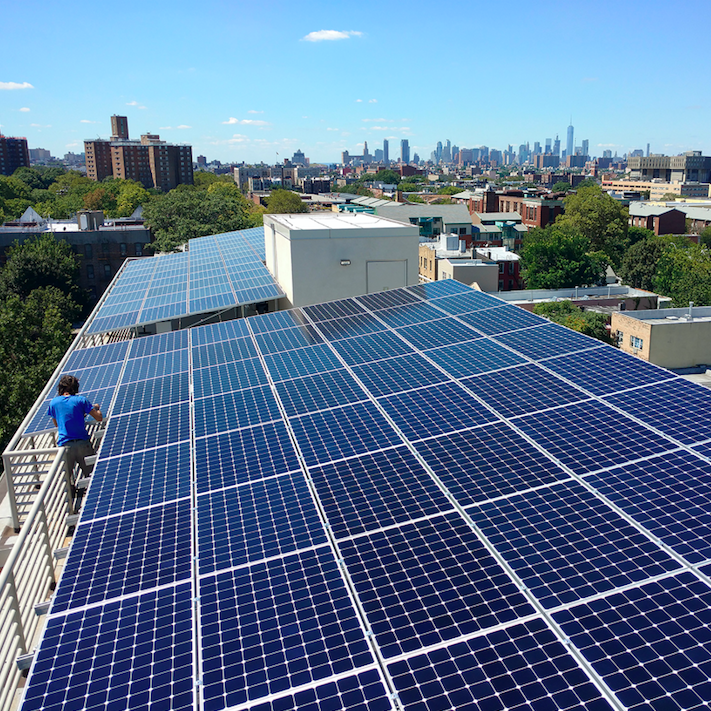Single-Origin Coffee Rewards Big Brands and Smallholder Farmers


The single-origin coffee bean market is booming due to demand for unique coffee tastes and interest in traceability, especially among millennials.
In the first six months of 2019, the single-origin coffee bean market has seen $182 million in grocery sales with 4 percent growth over last year, outpacing the total premium coffee segment, according to Nielsen data cited in an emailed statement to TriplePundit. And, based on a survey commissioned by Peet’s Coffee, 81 percent of coffee drinkers between the ages of 25 and 49 are willing to pay 10 percent more for single-origin coffees. This means financial rewards not only for company’s such as Peet’s, Starbucks and Lavazza, but also for many smallholder coffee farmers who provide 80 percent of the worlds’ coffee beans.
Let’s start with the basics. What is single-origin coffee? According to the specialty coffee news and information site Perfect Grind Daily, single origin is a small phrase with a big definition. The meaning is often simplified to a coffee that’s sourced from one single producer, crop, or region in one country. “Single farm” and “single estate” mean that the coffee is sourced from one farm, mill or co-operative. You can even go a step further and find coffee labels that tell you the exact estate name and the specific lot or paddock where the coffee was grown.

(Image: A coffee estate near the town of Chinchina, in Colombia's Zona Cafetera)
“The most important thing about single origin is its traceability, the fact that you know exactly where your coffee is from and that it’s a specific coffee, not a blend,” Andra Vlaicu from the Specialty Coffee Association told the Perfect Grind. “Usually of a higher quality, it’s the acknowledgment that the coffee is from a particular farm located in a unique setting, whilst its flavor depicts its origin, possessing characteristics of that specific area where the particular coffee was grown.”
Think medium-bodied and pungent, with tangy citrus flavors for a coffee from the highlands of Ethiopia and bright lemony notes, with a satisfyingly sweet finish for beans from Costa Rica. Thirsty for that cup of Joe yet?
Peet’s Coffee invests in single-origin coffee beans
Peet’s Coffee, which started in 1966 in Berkley, California, is one of a number of coffee brands that is getting into the single-origin business. It offers single-origin coffees from Sumatra, Colombia (coffee cherries grown on an estate in the country’s Zona Cafetera are shown at the top of this page), as well as Brazil, Ethiopia and Nicaragua.
In the fall, the company will add Costa Rica to its single-origin line, describing the coffee as “a direct trade medium roast with black plum and brown sugar taste notes.” Peet’s will source the beans from Finca La Hilda, owned by the Vargas Family. It has sourced from Finca La Hilda for its blends for decades and also provides support for the families working at the farm, such as onsite daycare and mobile medical clinics during harvest season. The company says it is all part of its efforts to source its coffees in a socially responsible manner.
Included in its responsible sourcing approach are annual visits to the farms from which it sources to inspect their social, environmental and economic standards. The audits are conducted by the non-profit Enveritas, founded in 2016 to “overcome systemic barriers that prevent the application of proven solutions for ending poverty among smallholder coffee growers,” according to its website. Peet’s funds annual audits, which examine the treatment of workers and farming practices, among other indicators, and shares the results with the farmers.
Peet’s also collaborates with growers through its Farmer Assistance Program, which offers a specialized two-year training program to help farmers improve the quality and quantity of their beans. Working with TechnoServe, a nonprofit organization that was an early leader in leveraging coffee farming to raise incomes and improve quality of life, Peet’s provides not only agricultural training to improve coffee yields, but also business training in accounting, record keeping, and book-keeping to enable farmers to lead sustainable, profitable enterprises. The company also offers training in environmental and social best practices to help farmers make informed decisions throughout the coffee lifecycle, such as diverting pulp water from wet mills to wetlands instead of allowing it to re-enter waterways untreated.
All of this support, of course, also benefits Peet’s in the form of a sustainable, high-quality, single-origin coffee bean supply. And it helps the company position its products as being responsibly sourced—a factor that can be a key differentiator in the increasingly competitive consumer coffee market.
Sustainable benefits for farmers
With higher yields and higher-quality beans, smallholder farmers are often able to charge more for their beans, sell to more brands and, thus, increase their incomes over time.
Paul Stewart, global coffee director of TechnoServe, has seen incomes raise three- to even 10-fold for some farmers he has trained in Ethiopia over the past decade. With the raise in income, he says farmers are able to invest more in the education and health of their families, invest in their farms, and also build separate side businesses to further buttress their resources. For families like the Vargases in Costa Rica, that can mean a lot.
It turns out that coffee can not only help us get through the day, but it can also be a powerful means of doing good.
Image credits: Leon Kaye
Carbon Positive Packaging From Lush: A Game Changer?


If you walk down any drugstore aisle, you become quickly aware of how plastic packaging enwraps most of the cosmetics and personal care products we use daily. Estimates of the cosmetics industry’s annual plastic packaging production range between 76.8 billion and 150 billion units.
Plastic packaging became the norm for the cosmetics industry starting in the 1950s due to its versatility in shape and size, as well as cultural shifts in the U.S. around hygiene and beauty that emerged during World War II. As showers became standard in Americans’ morning routines, so did the demand for liquid personal care products that could wash easily down the drain.
However, ongoing public outcry across the globe about plastics in oceans has encouraged cosmetics brands to rethink plastics and develop more responsible packaging. Notable cosmetic companies tackling the plastic packaging problem are L’Oréal and Garnier. For example, Garnier has teamed up with TerraCycle—a recycling and “upcycling” company that says it is determined to “eliminate the idea of waste”—to offer a take-back program for specific Garnier beauty products. L’Oréal signed with PureCycle Technologies, a company that uses waste plastic to produce virgin-like plastic, to get closer to its 2025 goal for 50 percent of its packaging plastics to be bio-sourced or of recycled origin.
While the work of Garnier and L’Oréal is a step in the right direction, their solutions do not remove plastic from the packaging equation entirely, nor do they remove the emissions from transportation further down the value chain.
'Carbon positive’ packaging: Sailing ships and regenerative forestry
Lush—a United Kingdom cosmetics company that boasts a line of package-free products—has developed what it calls a "carbon positive" packaging process that removes additional carbon dioxide from the air. The process does not use plastic packaging or container ships and results in what will encase some of Lush’s shampoo bars.
The packaging process is considered carbon-positive because it uses commercial sailboats instead of cargo ships to ship finished cork containers from Portugal to the United Kingdom. Lush also sources the cork at premium prices from forest owners who grow cork oak regeneratively.
“The [Lush] team’s calculations suggest that each cork pot sequesters over one kilo of carbon dioxide gas (and this is a very conservative estimate),” Miles King, a nature writer who works with Lush, told the Telegraph.
A revenue stream encouraging regenerative cork forests in Portugal
It is through Lush’s buying partnership with Eco Interventions, a nonprofit that works to restore Portugal’s Cork Oak forests, that regenerative practices have returned to the Portuguese cork industry. In recent years, forest owners’ ambitions to produce more cork have had a negative effect on the cork oaks’ well-being. Monte De Vida details how there has been a widespread die-off of cork oaks in Portugal due to a fungal disease and Portuguese cork harvesters’ excessive cultivation of land, which damages the shallow cork oaks’ roots and degrades the soil.
The 5 euros that Lush pays to Eco Interventions for each cork pot helps provide forest owners with the resources to cultivate native plants to replant around the trees and to transition away from pesticide usage. The 5 euros per container could quickly add up to bring meaningful change to the Portugal cork forest landscape, as Lush says it plans to purchase 500,000 cork containers by the end of the year.
Lush launches program that ships cork by sail
Lush also brought the regenerative philosophy of cork harvesting to the transportation portion of its “carbon positive” packaging process. The company launched a trial to ship 6,000 cork containers via a commercial sailing ship from Portugal to the United Kingdom at the beginning of July 2019.
“Transporting goods by sail cargo is a good fit with our ethics and ambition to reduce harm to the planet as it’s largely carbon neutral,” Derek Hallé, trade compliance manager for Lush U.K., told Fast Company.
At the same time, Lush is aware of the challenges of shipping by sailboat, such as the longer shipping time and lack of infrastructure that could increase costs drastically. It is important to Lush that acting ethically doesn’t get in the way of profitability, as it is essential in scaling up solutions such as shipping by sailboats. While shipping the containers by sail for now is unique to the cosmetics industry, entrepreneurs and academics believe the benefits of shipping cargo by sail will outweigh the challenges in the long run, according to Jeff Spross of The Week.
This process is a reminder that sustainable packaging requires a system reset—one that dares to redefine traditional logistics that make up not only the global cosmetics industry but also most other industries. Since 90 percent of what the global economy buys comes from container ships (which account for 3 percent of global greenhouse gas emissions) and 6.3 billion tons of plastic have found refuge in our oceans, more companies need to act on innovative transportation and material solutions similar to Lush’s process to reduce global greenhouse gas emissions. The more companies that try to reinvent their logistics with the environment in mind, the closer our global society is to finding regenerative solutions that can work in the long term.
Image credit: Markos Mant/Unsplash
Allen Coral Atlas Maps Reefs to Scale Up Coral Conservation


Launched late last year, the Allen Coral Atlas—a collaborative effort to fill in the data gaps and empower coral conservation around the world—is already making strong progress on using data, science and technology to create a super high-resolution image of all the world’s coral reefs.
The project is named after the late Paul Allen, the co-founder of Microsoft and an avid philanthropist. Allen was especially interested in ocean issues. He was a founding member of the International SeaKeepers Society, and his foundation, The Paul G. Allen Family Foundation, is keeping his legacy alive as a funder and supporter of the Allen Coral Atlas.
Why coral reefs are invaluable
"Coral reefs are the rainforests of the ocean, and they are in a period of unparalleled crisis," said Art Min, vice president of impact for the Foundation, in a press statement. “With the Allen Coral Atlas, scientists, NGOs and lawmakers will have the data they need to make more effective conservation decisions, giving our corals a chance at survival."
Coral reefs are indeed the tropical forests of the ocean, hosting an astonishing array of marine biodiversity, and now they are facing grave threats. Climate change is one factor, resulting in coral bleaching—when normally colorful corals turn white due to unnaturally warm water and eventually starve. Pollution, too, plays a role, whether by making it tougher for corals to grow and reproduce, or resulting in their literally ingesting plastic waste.
Coral health directly impacts the health of fisheries and other ocean products that millions around the world depend on. There are other impacts, too. Scientists have found evidence that weakened coral barriers along the Florida coast were a contributing factor in Hurricane Irma’s massive storm surge and subsequent flooding back in 2017. As storms get stronger, coral reefs could help improve coastal resilience.
So while we know that coral reefs worldwide are facing unprecedented stress from human and climate impacts, protecting them requires understanding of their scale and extent around the world. For various reasons, chiefly that most coral are underwater, making them difficult to observe remotely, the information on reefs around the world is lacking.
Technology meets expertise to catalog, and save, coral reefs
Enter Allen Coral Atlas, which brings together researchers from the University of Queensland and Arizona State University, the renowned storytelling capability of National Geographic, and the technological capability of Planet, one of the leaders in remote sensing and satellite technology. Together, they aim to produce a detailed atlas with a vast database of information about the health and size of coral reefs around the world.
"Seeing change is the first step to making change," said Andrew Zolli, vice president of global impact initiatives at Planet, in a press statement. "By making changes in these exquisite, vital and imperiled ecosystems visible, accessible and actionable, we hope to put timely information into the hands of those who need it most to accelerate new conservation strategies.”
The project has ambitious goals. Currently, its researchers have mapped five sites as part of a proof of concept. By this fall, they aim to have time-series satellite imagery ready and hope to have their entire atlas completed by December of 2020. All of this data will be available to any researchers or government agencies around the world through an open technology platform.
The question then becomes: Will global policymakers act on protecting our oceans, the vast majority of which are considered the “high seas” and not under the jurisdiction of any one country? There is hope here, too. The past year has seen strong action on other ocean issues, such as the growing plastic pollution crisis, and there’s even an effort to create a new United Nations Convention Treaty on the High Seas. Empowered with actionable data from the Allen Coral Atlas, perhaps we can come together to carry forward a plan to save the world’s coral reefs as well.
Image credit: Q.U.I./Unsplash
Investment Fund Helps Social Impact Startups Gain Access to Capital


There’s a lack of seed capital for early-stage social impact startups working to build out solutions for problems across the globe. And Alex Amouyel, executive director of MIT Solve, an initiative of the Massachusetts Institute of Technology, was determined to do something about it.
“There is a real pioneer gap at the early stage of social entrepreneurs. They tell us capital is their No. 1 need,” Amouyel told a group of innovators.
The solution? The $30 million Solve Innovation Fund, an independent investment vehicle and first-of-its kind philanthropic venture fund that will target investments at early-stage, for-profit companies that are pursuing social impact solutions for various global challenges. MIT will serve as an advisor.
Every year, Solve issues four global challenges to find the most promising “Solver” teams that can drive transformational change. The staff at Solve deploys its global community of private, public and nonprofit partners to collaborate with the Solver teams to help scale their social impact strategies. The 2019 challenges are the circular economy, healthy cities, early childhood development and community-driven social innovation.
In its three-year history, Solve has attracted over $12 million in funding from a variety of philanthropic partners. But as Amouyel said in her announcement, those resources are mostly in the form of grant funding. What their for-profit teams need is project finance, she said, which is sorely lacking at the scale needed for smaller startups.
Solvers urged to “be unreasonable”
“It's highly unlikely that a reasonable idea is going to change the world,” said Noubar Afeyan, founder and CEO of Flagship Pioneering and an MIT Corporation member, who committed up to $3 million as the Fund’s founding anchor donor. “You have to find a way to persist until the world considers it reasonable."
Previous winners include Nnaemeka Ikegwuonu, CEO of Cold Hubs, which is headquartered in Nigeria. The social enterprise brings energy-efficient, solar-powered refrigeration to off-grid communities, therefore enabling fishermen and farmers to preserve perishable food.
Cold Hubs says its rooftop solar panels generate enough power to run the refrigeration hubs in all weather conditions, and an energy-efficient monoblock refrigeration unit provides reliable autonomous refrigeration 24 hours a day, seven days a week. The system is necessary as an estimated 6,000 tons of fish are harvested every day in the Niger River Delta (as shown above), but currently only about 2,000 tons of it is available to be sold fresh. By renting storage space for only $1 a night, users will be able to sell their fish for a much higher price, greatly increasing their income.
Another winner is Deanna MacDonald, CEO of Bloc, headquartered in Copenhagen, Denmark. MacDonald launched Maritime Blockchain Labs, a blockchain-based solution to track the quality of marine fuels as they are passed through the supply chain. The technology gauges every player in this sector, from fuel producers to suppliers, to these fuels’ transfer at the terminal and, finally, to onboard combustion.
The startup sought to tackle a key challenge for the shipping industry: This sector accounts for 10 percent of global carbon emissions, and in turn poses ongoing health and safety risks to coastal communities. New regulations seek to control fuel quality and reduce emissions, but there has been no way to track fuel data or enforce clean fuel requirements.
Bloc’s solution provides verified traceability of the fuels being delivered to companies across the maritime industry. This in turn helps ship owners to make better informed fuel-purchasing decisions, enables authorities to monitor and regulate emissions, and allows insurance companies to pay out compliant shipping companies for engine failures due to contaminated fuel.
A pay-it-forward model for social impact
As Amouyel explained, any return on social impact investments will be redirected into the next class of Solver teams, so the money is multiplied in its impact and success helps fund future Solver teams, creating a pay-it-forward model.
Today, according to its website, the Solve ecosystem comprises 58,000 active platform users, hundreds of judges and mentors, 99 “Solver teams” from 32 countries, and more than 100 member organizations.
“We cannot solve today’s complex multi-dimensional challenges by foreign aid, by public services, or by philanthropy alone," Amouyel wrote in a recent op-ed for The Boston Globe. "No one actor has all the answers or the monopoly of good ideas. Cross-sector cooperation—working with the public, private and non-profit sectors—is more critical now than ever before."
Image credit: Claire Tardy/Pixabay
Leading Retailer Serves Up a Heaping Portion of Body Shaming


Recently, Macy’s stopped selling a line of novelty portion-control plates following online accusations of body shaming and insensitivity.
So, what was so bad about these plates?
You know those jovial, animated dishes in Beauty and the Beast, the ones singing “Be Our Guest” and encouraging Belle to eat more? Well, these plates are basically the opposite.
The dishes, made by the New York-based company Pourtions, feature three concentric circles, each with a phrase describing that portion size. The smallest portion circle says “Skinny Jeans,” the middle says “Favorite Jeans,” and the largest says “Mom Jeans.” The obvious implication is if you want to stay skinny and not end up in the dreaded (or beloved) mom jeans, you'd better only eat what’s in that tiny circle-sized portion.
Harmless humor, or public shaming?
This plate, widely derided across social media for its apparent body shaming, isn’t the only product Pourtions produces. The company also makes other items such as a plate that says “Feed Me” and “Feed Bag,” a pasta bowl that says “Manicotti” and “Man Overboard,” and a wine glass that says “On the Lips” and “On the Hips.” (These other items were not sold at Macy’s.)
While the “mom jeans” dishes have been available at Macy’s for a few weeks, according to Pourtions’ Instagram account, they hadn’t garnered much attention until podcaster and comedy writer Alie Ward tweeted a photo of the plates on Sunday, asking, “How can I get these plates from @Macys banned in all 50 states [?]”
Macy’s replied to Ward’s tweet hours later, apologizing and stating the plates had been pulled from the retailer’s Herald Square location (the only store displaying the plates).
Ward later explained in an email to HuffPost that she “just wanted to show the world how insidious beauty culture, and in this case one that shames women, can be. But I wanted Macy’s to know that what they carry and display matters, it can hurt people, and they’re accountable for it.”
Pourtions’ co-owner Mary Cassidy said in an email to The Washington Post that the company never intended to shame or hurt anyone, as the plates were meant to be “a lighthearted take on the important issue of portion control.” She went on to write:
“Everyone who has appreciated Pourtions knows that it can be tough sometimes to be as mindful and moderate in our eating and drinking as we’d like, but that a gentle reminder can make a difference. That was all we ever meant to encourage.”
Why body shaming is an epic fail
Cassidy is correct in stating the importance of portion control. Science confirms that awareness of food portions can be an effective tool in losing and managing weight. This is why so many weight loss plans—WW (formerly Weight Watchers) and Noom, for example—incorporate portion control education in their curriculum.
What doesn’t work, however, is shaming people into losing weight.
And what tactic definitely doesn't work when it comes to motivating people on any challenge, period? Shaming. It’s not an effective strategy for businesses, and it’s not effective for people looking to lead healthier lives.
A 2017 University of Pennsylvania study found a “significant relationship between the internalization of weight bias” and greater health risks.
“There is a common misconception that stigma might help motivate individuals with obesity to lose weight and improve their health,” said lead researcher Rebecca Pearl, PhD, in a press statement about the study. “We are finding it has quite the opposite effect. When people feel shamed because of their weight, they are more likely to avoid exercise and consume more calories to cope with this stress.”
So as “lighthearted” as Pourtions intends its products to be, the reality is that seeing messages like “Feed Bag” and “Man Overboard” can be damaging in part of a larger context.
Were these dishes meant to trigger disordered eating habits? Of course not. But they normalize an already pervasive culture of finding humor and promoting disdain in larger body sizes. And with body shaming already ubiquitous in everything from advertising to fashion to sports, we don’t need our dinnerware to join in, too.
Image credit: Pourtions
The U.S. Education System is Ripe for Innovation—And Investment Can Help


This article series is sponsored by the SunTrust Foundation and produced by the TriplePundit editorial team.
Education is a powerful tool. Often seen as an opportunity for advancement both socially and economically, education lies at the center of a country’s ability to grow, thrive and compete in the global economy. It’s no secret; however, that student performance and equitable access to quality education in the U.S. is lagging behind.
The SunTrust Foundation is making strides to change that. With a series of recent investments in innovative new education models, the philanthropic arm of SunTrust Bank believes that change is not only necessary to help fill today’s skill-based jobs and those of the future but also will likely only happen through intentional collaborations.
With a new grant strategy that resembles the investments made in the venture capital world, the SunTrust Foundation is partnering with a number of organizations that are looking to make a big change in the U.S. educational system.
Why we need innovation in education
According to the Pew Research Center, when comparing the science, math and reading scores of 15-year-olds across 90 countries, the U.S. ranks right in the middle of the pack. In addition to a less than ideal achievement ranking, changes in the job market have compounded the issue. By one popular estimate, 65 percent of children entering primary school today will ultimately work in fields that don’t exist yet—making it all the more important to prepare young people for a rapidly evolving workforce.
If we were to look at education on a micro-level—state to state and district to district—it’s apparent that race and socioeconomic status are also major determining factors in the level of and access to quality education.
If we hope to prepare young people for the jobs of the future and compete in a global, increasingly competitive economy, it’s clear we need to take a second look at how our educational system works.
A VC-like investment strategy drives new models forward
Innovation in education starts with the people and organizations who are passionate about creating change. But as nonprofit organizations—within the education space and beyond—face funding shortfalls, they increasingly depend on engagement and investment from the private sector to bring their solutions to scale.
With the goal of helping their clients live a life well spent, education is a core area for grant-making at the SunTrust Foundation. Through a targeted series of investments in innovative models, the Foundation hopes to help remove systemic barriers to quality education.
This investment strategy isn’t only about today, but also about seeing the outcomes bear fruit into the future, explained Stan Little, president of the SunTrust Foundation. “These [investments in] innovations in education are really geared toward the goal of income generation, employment and career development” for students over the long term, he told TriplePundit.
Little, an engineer by training who came to SunTrust Bank from the tech world, is leading the charge in creating this culture of innovative investments at the Foundation. He describes grantees not as beneficiaries of the Foundation’s capital, but rather as a portfolio of investments.
“We think about this like a balanced portfolio with an aggressive part of the portfolio and a sustaining part of the portfolio,” Little explained. “Although there are a lot of metrics about lives impacted in individual circumstances … [our investments in] innovation are really more like venture capital—young, new, untested, theory-based—and it could be a moonshot.”
The Foundation’s current portfolio includes nonprofit and community organizations looking to drive solutions at all levels of education, from early childhood to postsecondary.
Take, for example, the Girls Leadership Academy of Wilmington (GLOW), an all-girls public charter school based in Wilmington, North Carolina. With a stated focus on educating the “whole girl,” GLOW says it offers a learning environment that nurtures the emotional, physical, and academic needs of every student, from grades six through 12. It also looks to inspire its students—90 percent of whom are from low-income backgrounds—to get interested in science, technology, engineering and math, with a maker’s lab that gives girls hands-on training in STEM-related skills.
edX is another organization with an innovative new approach to tearing down barriers to education. A nonprofit founded by the Massachusetts Institute of Technology and Harvard University, the organization is pioneering a "MicroBachelors" degree to make postsecondary education affordable and widely attainable for more people.
The SunTrust Foundation also invests in 3DE, a public-private partnership operating in greater Atlanta and expanding nationally that delivers a high-school structure and curriculum in an engaging experiential environment with hopes of better preparing students for life beyond the classroom.
The bottom line
As the fourth industrial revolution continues to dictate how we learn and work, organizations that are fusing technology with the learning process have an opportunity to create lasting change in the lives of individual students and in our country. Hacking the future of work will require partnerships that bring forwarding-thinking corporate citizens together with passionate educators.
In the coming months, in partnership with the SunTrust Foundation, we’ll profile the above organizations and more—and we’ll take a closer look at how innovative corporate partnership models can push the education conversation forward.
Image credits: MD Duran and JodyHongFilms via Unsplash
Timber and Pulp Sectors Must Wake Up to Climate Change Risks

Forestry is in the red zone, at least when it comes to ecological and social practices. According to The Zoological Society of London’s (ZSL) 2019 assessment of the timber and pulp industries, only 20 of the 97 companies they studied have pledged not to adopt practices that can contribute to deforestation.
Timber and pulp production is currently one of the four largest drivers of global deforestation — the permanent clearing of a forest to make room for uses such as crop plantations, roads and sawmills.
Unfortunately, these 20 companies do not have everything together. The Sustainability Policy Transparency Toolkit (SPOTT), the ZSL’s initiative that is behind the report, found that of those 20 companies that had committed to not deforesting, only 12 had systems for monitoring deforestation. Of those 12, seven had published figures on deforestation within the past two years.
The next figure puts the final nail in the coffin of an industry in denial. Only 6 percent of timber and pulp companies have assessed the risks of climate change to their business.
Perhaps the most troubling finding is the lack of transparency these companies have offered the public. SPOTT reports that only 13 percent of companies had publicly available geo-referenced maps of their forestry operations. This makes it nearly impossible to know where a company is operating and how they are harvesting their trees.
Moving onto their social impacts, transparency when it comes to gender representation is even worse within this sector. SPOTT found that only 4 percent of companies reported their salaries by gender.
Opacity is not a good look when industries like fashion are in the news because they are picking up the pace on sustainability and social consciousness. But timber and pulp are not in the public eye in the same way as fashion or energy.
Perhaps they should be. SPOTT recommends that investors, buyers and governments put forestry more in the limelight by asking for clearer and easier access to data.
“Companies operating in tropical forests not only face risks to their business from climate change but have a real ability to effect change – if they can commit to, and demonstrate their actions on, zero-deforestation, we would all – wildlife and people - see a huge benefit,” Oliver Cupit, SPOTT Manager said in a press release.
“If not addressed, climate change and deforestation pose major financial and reputational risks to companies, their buyers and investors.”
What spatial data should these companies disclose? Along with size, location and boundaries, SPOTT recommends three main features to divulge:
- The areas currently designated for wood or wood fiber production;
- Areas that are set aside for conservation;
- And processing units, including sawmills and pulp and paper mills.
Over the past three years, the difference in these companies’ average SPOTT scores was negligible.
As usual, adapting to the current climate (literally and figuratively) is not completely a matter of altruism. Altering practices will not only help curb the impacts of climate change; it will help the sector survive. Climate change affects a forest’s productivity with changes in temperature, levels of carbon dioxide, rainfall, as well as the increase in disturbances like wildfires and insect outbreaks.
Keeping a forest healthier with balanced forestry practices, like selective harvesting, can help these forests remain resilient to change. These practices don’t just help the globe; they help the industry retain the resources it relies on.
It is possible that the companies included in SPOTT’s report are already taking good care of their forests, and they’re too busy doing a good job to publish the data that backs it up. If that’s the case, they should know it doesn’t hurt to publish their successes. If investors find out, their bottom lines might just thank them for it.
And if these companies are not quite there yet, being transparent and honest will surely show they want to get on the right track. Investors will notice that, too.
Image credit: ZSL
Four Automakers Proved States Can Move the Climate Action Needle


A new voluntary agreement between four top automakers and the state of California is a powerful illustration of the impact that business stakeholders are having on the transition to a low-carbon economy in the U.S. Rather than taking their lead from policy makers at the federal level, businesses are working with forward-thinking states to accelerate the adoption of new clean technologies.
A historic shift in climate action
For decades, auto manufacturers could count on federal policy to reflect California’s leadership role on curtailing tailpipe emissions.
Though often onerous from the perspective of automakers, a strong federal policy on emissions ensured them of access to a single, nationwide market.
That relationship has been upended in recent years. California adopted a new set of emissions rules during the Obama administration, but now federal policy makers are attempting to enforce more relaxed standards nationwide. The bottom-line benefit of a unified market is at risk of evaporating.
The situation is complicated because California is a leading auto market in its own right. In addition, 13 other states have already committed to California’s latest standards: Connecticut, Delaware, Maine, Maryland, Massachusetts, New Jersey, New Mexico, New York, Oregon, Pennsylvania, Rhode Island, Vermont and Washington.
Allowing some states to adopt lower standards would break the U.S. auto market into at least two parts, creating new headaches for an industry already beleaguered by declining sales and other economic forces.
The new California auto emissions agreement
Considering the high bottom-line stakes involved for automakers and their supply chains, it’s little wonder that the new California emissions agreement grabbed the media spotlight.
California Governor Gavin Newsom announced the new agreement on July 25. He positioned it as a means of accelerating the transition to electric vehicles, and also as a direct benefit to both the auto industry and the California economy.
By helping to maintaining a stable, reliable regulatory environment that provides certainty for auto manufacturers, the new agreement also helps to support job creation and economic growth.
Ford, Honda, BMW of North America and Volkswagen Group of America are the four auto manufacturers that formally support the agreement. It calls for California to continue its plan for emissions reduction, though allowing for an additional year for compliance. The new target is model year 2026.
The new framework applies to cars and light duty trucks. Though slightly longer than the original timeline, it will still have a significant impact on climate action in the U.S.
In adhering to the new agreement, the four automakers are aiming for a goal of reducing greenhouse gas emissions nationwide by 30 percent or more, compared to the reduction that would result from a two-tiered standard.
In contrast, the Trump administration is preparing to freeze standards at model year 2020 through 2026.
A new wrinkle climate action
The agreement is also significant because it provides a new pathway for business stakeholders to exert pressure on federal policy makers for climate action.
The Trump administration has argued that California has no authority to unilaterally impose stricter standards. By reaching a voluntary agreement, the four automakers have neutralized that argument.
Now that the agreement has been formalized, it is likely that other global auto manufacturers will follow the new standards
Last month, Reuters reported that a group of 17 leading auto manufacturers — including General Motors, Toyota, VolkswagenDaimler AG, Hyundai and Honda — wrote to both Governor Newsom and President Trump, urging a compromise.
The EV revolution and climate action
The new framework also cements the role of electric vehicles in the auto market of the future.
It includes fleetwide incentives for manufacturers to accelerate production of electric vehicles.
The framework also removes a previous requirement that manufacturers account for greenhouse gas emissions associated with electricity generation.
Those upstream emissions were a significant concern when coal dominated the power generation sector in the U.S. However, coal has faded out of the picture in favor of natural gas, and now low-cost renewable energy is beginning to push both coal and gas aside.
Why the California agreement matters
Until now, much of the business activity in the climate action area has centered around demand for renewable energy. The new California agreement represents climate action on the supply side, in which manufacturers aggressively advocate for continued progress on climate action.
A similar dynamic has long been at work in the appliance field, where the industry has continued to support the EPA’s popular Energy Star voluntary incentive program for energy efficient products.
Also of interest is the fact that the transportation sector is now the leading source of greenhouse gas emissions in the U.S. The California agreement demonstrates that auto manufacturers are determined to pass that mantle on to another sector.
In addition, by voluntarily affirming the right of state-level policy makers to push the envelope on clean technology, electric vehicles and climate action, the auto industry is shrinking its exposure to other areas of conflict related to fossil fuels.
To cite just two recent examples, the state of Washington has come under siege from North Dakota and Montana over its new regulations that effectively prevent their oil from entering its borders by rail, and Michigan has sued the Canadian company Enbridge for removal of an oil pipeline in the Great Lakes.
Image credit: BMW USA
U.S. Businesses Keep Pushing the Solar Power Envelope


Business leaders have become widely known for their support of renewable energy, and now a major solar industry trade organization has quantified the impact of that support. In its seventh annual Solar Means Business report, the Solar Energy Industries Association tracked 7,000 megawatts of installed solar capacity among U.S. businesses in 2018, up from only 2,500 MW the year before.
The number of projects tracked by SEIA also took an impressive jump. The 2018 report tracked 35,000 projects, compared to only 7,000 in 2017.
Solar power means business in 2018: Counting all the solar projects
Part of the jump in numbers has to do with a change in reporting. The previous six surveys tracked only solar arrays installed onsite by businesses.
Until recently, that metric would have been sufficient to track growth. Onsite solar has been the main pathway for solar adoption by businesses, typically in the form of rooftop solar panels.
Now, other options are emerging. Accordingly, the 2018 report includes, for the first time, large solar arrays that have been constructed offsite. In fact, offsite acquisitions accounted for more than a third of solar energy procurement by businesses in 2018.
Including both onsite and offsite, four widely familiar brand names top the list of largest solar buyers: Apple, Amazon, Target and Walmart. Large corporations also dominate the other six slots in the top 10, though not all are necessarily household names across the U.S.: Switch, Google, Kaiser Permanente, Prologic, Salvay and Fifth Third Bank.
White House support or not, solar (power) means business
The continued growth of the domestic solar industry is especially notable in consideration of White House policy favoring fossil fuels over renewables.
When President Donald Trump started the process to pull the U.S. out of the Paris climate agreement in 2017, solar advocates feared an industry slump. Those concerns were amplified last February when a new 30 percent tariff on imported solar panels went into effect.
Despite these challenges, the report notes that more than half of all installed capacity by corporations occurred after 2016, the last year of the far more solar-friendly Barack Obama administration. The report cites lower prices, more flexible financial tools and new procurement options as driving solar growth.
In addition, supportive programs are still running strong at Department of Energy, though mainly under the media radar. The agency’s initiatives include foundational research designed to lower the cost of solar panels and other solar installation hardware. Programs to help reduce “soft” costs of rooftop solar are also included.
The Department of Energy has also been leveraging solar support among local governments and businesses. The agency and its private-sector partners work with local governments and rural electric cooperatives to introduce more renewables.
Other related programs supported by the Department of Energy include the Better Buildings initiative and the Solar Ready Vets job training program.
Why solar power?
Support from the Department of Energy is important, but the key factor driving the solar industry is continuing demand from U.S. business leaders.
Early large-scale adopters—including retail and tech giants like Amazon, Target, Walmart and Google—helped to build economies of scale. Their willingness to absorb relatively higher costs contributed to today’s robust, competitive solar market.
Now solar power can compete directly with fossil fuels in many parts of the U.S., and costs are still dropping. That direct bottom-line incentive is just one element fueling the business demand for solar.
Companies are also becoming more aware of the security and resiliency advantages of onsite solar plus energy storage. Demand for renewables from their supply chain partners is another factor. Consumers and clients are also demanding more solar and other renewables.
In particular, onsite solar provides corporate citizens with social responsibility opportunities for trading or sharing clean power with the community. They can also contribute to demand shaving and other community reliability initiatives enabled by smart grid technology.
Mainstreaming the solar message
Solar has come a long way in just a few years for commercial electricity users, but a recent survey by Deloitte indicates that residential consumers are still wary of installing solar panels on their roofs.
In that context, the new SEIA report suggests that corporate solar energy buyers can help motivate residential consumers to adopt rooftop solar by helping to build public awareness that solar panels are mainstream and reliable.
Part of the impact is simply visual. SEIA points out that an average of more than 6 million people visit a Walmart store with onsite solar every week. SEIA also notes that Amazon offsets the CO2 equivalent of 200 million miles of ground delivery with solar, and Apple accounts for more than 60 billion smartphone charges with its solar facilities.
What’s next for solar?
The new solar tariffs are already in the first stages of a planned phaseout. All things being equal, that should provide some relief to the U.S. solar industry.
However, new challenges loom on the horizon. Reuters reports that U.S. solar companies are stockpiling solar panels in anticipation of the clock running out on a 30 percent federal tax credit for solar projects. The tax credit will be eliminated entirely for residential customers after a three-year phase-out, Commercial and industrial customers can still qualify for yearly step-downs until 2022, when their tax credit will settle at 10 percent.
On the other hand, given the likelihood that both hard and soft costs for solar energy will continue to fall, business leaders will still have ample bottom-line justification for continuing to push the market for solar.
Companies and their partners are already seeking new opportunities to give smaller solar buyers a leg up. One interesting development in that area is a new solar partnership between Bloomberg, Cox, Gap, Salesforce and Workday.
Earlier this year, the five companies claimed 42.5 megawatts from a proposed 100-megawatt solar farm in North Carolina. By serving as “anchor tenants,” the partnership helped to motivate construction of the new project, enabling an additional 58.5 megawatts of solar to go into the grid.
Image credit: U.S. Department of Energy/Flickr
E-Scooters Less Of A Nuisance As Cities Integrate Them Into the Transport Mix


E-scooters seem less likely to run people off sidewalks than they did a year ago, with more riders operating them properly in bike lanes or roadways as opposed to zig-zagging their way around people on foot, USA Today reported last week. In addition, e-scooters are becoming less of a tripping hazard, as fewer of them tend to be found toppled in the path of pedestrians and are instead parked up neatly and orderly.
USA Today tech columnist Jefferson Graham made these observations in Los Angeles, a city which hosts more e-scooters than any other, numbering over 33,000 today. If this trend continues, perhaps a boost in their reputation could follow.
After ongoing backlash against e-scooters from the public, it’s certainly an encouraging development if people are using them more responsibly—though it should be noted the reporting in USA Today is somewhat anecdotal rather than being based on hard data. Indeed, Graham goes on to say it’s still the case that many riders continue to use e-scooters on sidewalks illegally.
Rider safety remains a concern, too. Product liability lawyer Jesse Halfon, writing in Citylab, cites a study of dockless e-scooter accidents conducted by the U.S. Centers for Disease Control and Prevention, which found that riders suffered an injury for every 5,000 miles ridden. Nearly half of those were head injuries, and a third were incurred by first-time riders, according to the study. So for sure, there is still much work to be done to add e-scooters safely to the transportation mix, as well as in overcoming public resistance.
Nevertheless, the observation of more responsible use comes not without some validity. This is almost certainly because transportation chiefs in cities where e-scooters are deployed have in many cases wrestled some control from the scooter operators by introducing regulations on their use and often imposing a cap on the number of scooters in service.
At the beginning of 2019, at least 44 e-scooter bills were introduced in 26 states, Halfon details in Citylab. This indicates that a maturation of the industry is afoot, and consistent with the anecdotal evidence from Los Angeles that Graham described in USA Today. It’s clear cities that have operated controlled pilot programs are seeing significant success in prompting more responsible usage.
San Francisco is a case in point. The city outright banned e-scooters several months after they were deployed. They appeared “overnight” uninvited on its streets and subsequently generated myriad complaints from the public, prompting the sudden time-out.
Following the ban, San Francisco permitted a reintroduction of e-scooters last October, but only as a year-long pilot program, with just two e-scooter operators selected by the city. The city also only allowed 1,250 scooters in total, and a number of responsibilities were placed on scooter operators to enhance their proper use.
Evidently, the pilot has been a success. Just last week, the San Francisco Municipal Transportation Agency (SFMTA) Board of Directors voted to make e-scooters a permanent addition to city streets in a 5-2 vote, Curbed San Francisco reported.
Back in June, the San Francisco Chronicle detailed some of the positive findings from the six-month point of the pilot, which no doubt contributed to the SFMTA’s decision to allow e-scooters to become a permanent fixture. The agency's director noted both reduced sidewalk riding and reduced illegal sidewalk parking. The nuisance factor to pedestrians was further mitigated as the two companies selected for the pilot had to ensure their scooters came with locks. This had the effect of ensuring scooters weren’t constantly toppled over, since they had to be locked to bike racks or posts when riders were finished with them.
After the pilot concludes in October, the number of scooters on San Francisco’s streets will increase, but SFMTA will retain control over the total number, as well as any decisions on who operates them, Curbed San Francisco reported. A spokeswoman for the city was pleased with the pilot, and she even lamented the fact the city hadn’t introduced a similar pilot program for app-based ride-hailing services, too.
The thing is, cities are actually quite keen to make e-scooters a successful part of the transportation infrastructure. To this point, the National League of Cities—an advocacy group for the nation’s cities and their leaders, with over 2,000 member cities—says in a recent report: “Micromobility promises smaller, more affordable and more environmentally sustainable modes of transportation.” The organization goes on to say these new modes of transport can be a way for cities to meet their sustainability goals as scooters often replace car trips.
Supporting this claim, Carolyn Said of the Chronicle writes that often, e-scooters are a means for people to get to mass transportation hubs, such as train stations, concluding: “Scooters induce transit trips at roughly four times the rate that they replace transit trips, indicating that they could complement transit by serving as a valuable last-mile connection.”
Scooters can also provide another social good when effectively regulated. For example, some cities have imposed regulations ensuring that units are deployed in low-income parts of the city, providing enhanced mobility options to members of the community who are typically less well served. Furthermore, in the case of Washington, D.C., operators are required to offer preferential rates for low-income residents.
There are still question marks hanging over whether e-scooter business models are poised to actually make money in the long run or not. Though it should be noted that just this week, e-scooter operator Bird was valued at $2.5 billion in a new funding round, indicating investor confidence remains robust. In any case, it certainly seems that both the scooter operators and city leaders should welcome a trend toward more responsible use. Indeed, it is in their mutual interests to work together toward that end.
Image credit: Phil Covington